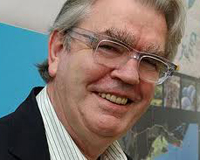If London is to remain the world’s top global city it must significantly expand its core, according to Sir Terry Farrell, whose new vision for the UK capital was at the heart of Estates Gazette’s A Vision for London debate at MIPIM last week.
 Farrell said central London should be intensified to cover the entire area within the north and south circular inner ringroads, with peripheral areas such as Tottenham and Brent Cross creating new clusters that will form part of the core.
Farrell said central London should be intensified to cover the entire area within the north and south circular inner ringroads, with peripheral areas such as Tottenham and Brent Cross creating new clusters that will form part of the core.
Hogan Lovells’ head of real estate Jackie Newstead said that attracting global capital into new parts of London would be a challenge, with many global investors only willing to invest in the core.
“If you can reclassify some of these areas as core then you are opening up a whole new area,” she said. “Infrastructure is key. That takes the right attitude from government as well as investors.”
Cushman & Wakefield partner James Beckham added that the success of King’s Cross, where the new Eurostar terminal has helped catalyse huge regeneration, showed how global capital was willing to buy in to new areas.
Rents in the area have almost trebled in 10 years and the recent sale of a 25% stake in the King’s Cross Central Partnership to AustralianSuper underlines the attractiveness of the submarket to the world’s top funds.
Yields in King’s Cross have compressed by around 300 basis points in the last decade, said Beckham, arguing that referring to peripheral areas of London as fringe was unhelpful.
“A lot of Asian investors are really comfortable with large-scale development risk,” he said. “We need to change our language and cut the word fringe out of our conversations.”
City of London policy and resources committee chairman Mark Boleat welcomed calls for an intensification of the core, arguing a greater density of development would create a more sustainable city.
Farrell said new bridges across the Thames would also be key to unlocking large parts of the capital for new development, calling for 12 new low-level crossings in east London.
“Every good city has close connectivity between its banks,” he said. “This doesn’t happen in east London so the east won’t reach its potential until we have bridges there.”
Capital & Counties managing director Gary Yardley agreed that building new infrastructure would be vital if London’s current success was going to be maintained, and not lost to the cyclical nature of the property market.
“We must be talking about infrastructure. If it takes us another 50 years from now to build another Crossrail then we really will be in a jam,” he added.
Farrell agreed that capital was attracted to new infrastructure, but only where it was planned ahead.
“We are developing Crossrail and HS2 slightly out of sync,” he said, adding that better co-ordinating these mega projects would allow global investors to make more informed decisions about the areas in which to invest.
Read EG’s London Investor Guide for a full explanation of Farrell’s masterplan >>











